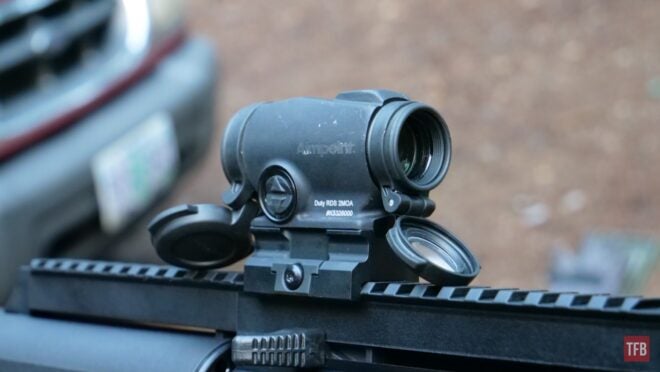Aimpoint is often a name that is synonymous with the terms “expensive” and “high quality.” While many will more likely know them for just being plain expensive, I’ve come to recognize the Aimpoint series of red dot optics to be some of the best in the business in terms of durability, flexibility, reliability, and features. The Aimpoint Duty RDS was announced at SHOT Show 2023 and was billed as being a more affordable alternative to the more expensive Aimpoint Micro T-2. I’ve had a ton of recent experience with the Micro T2 through a couple of carbine classes I’ve been fortunate enough to take, and today I’m going to use that recent experience to compare it to the newer, and more affordable Aimpoint Duty RDS to see if the reduced price (MSRP of $499) is worth the reduction in performance that this particular optic offers.
Aimpoint @ TFB:
- Aimpoint – Supplier Of Red Dot Sights For L403A1
- AIMPOINT, SIG SAUER and EOTECH Awarded Contracts for UK’s Support Weapons Enhanced Sighting Systems Program
- POTD: CZ Scorpion EVO 3 S1 With Aimpoint Micro T-2
TFB Review: Aimpoint Duty RDS – T2’s More Affordable Cousin
The Aimpoint Micro T-2 and the Aimpoint Duty RDS are both meant to be compact, durable optics, and night vision capable optics. The Aimpoint T2 has already established itself in this field and aside from a few other value-conscious competitors in this space, the Micro T-2 remains supreme in terms of its capabilities and ruggedness when compared to other red dot offerings. Like all Aimpoint offerings, the newer and more affordable Duty RDS is made in Sweden.

To better understand the differences between the Aimpoint Duty RDS and the older and more expensive T2, we’ll first go over what they both can do. Both optics feature a true 1x magnification (no magnification), long battery life, a simple 2 MOA red dot, four night vision compatible settings, great impact/shock resistance, and water resistance up to 80 feet, Some of the major differences, however, are what make the Aimpoint Duty RDS a hot contender for those looking for a more affordable optic that still boasts an Aimpoint feature set.
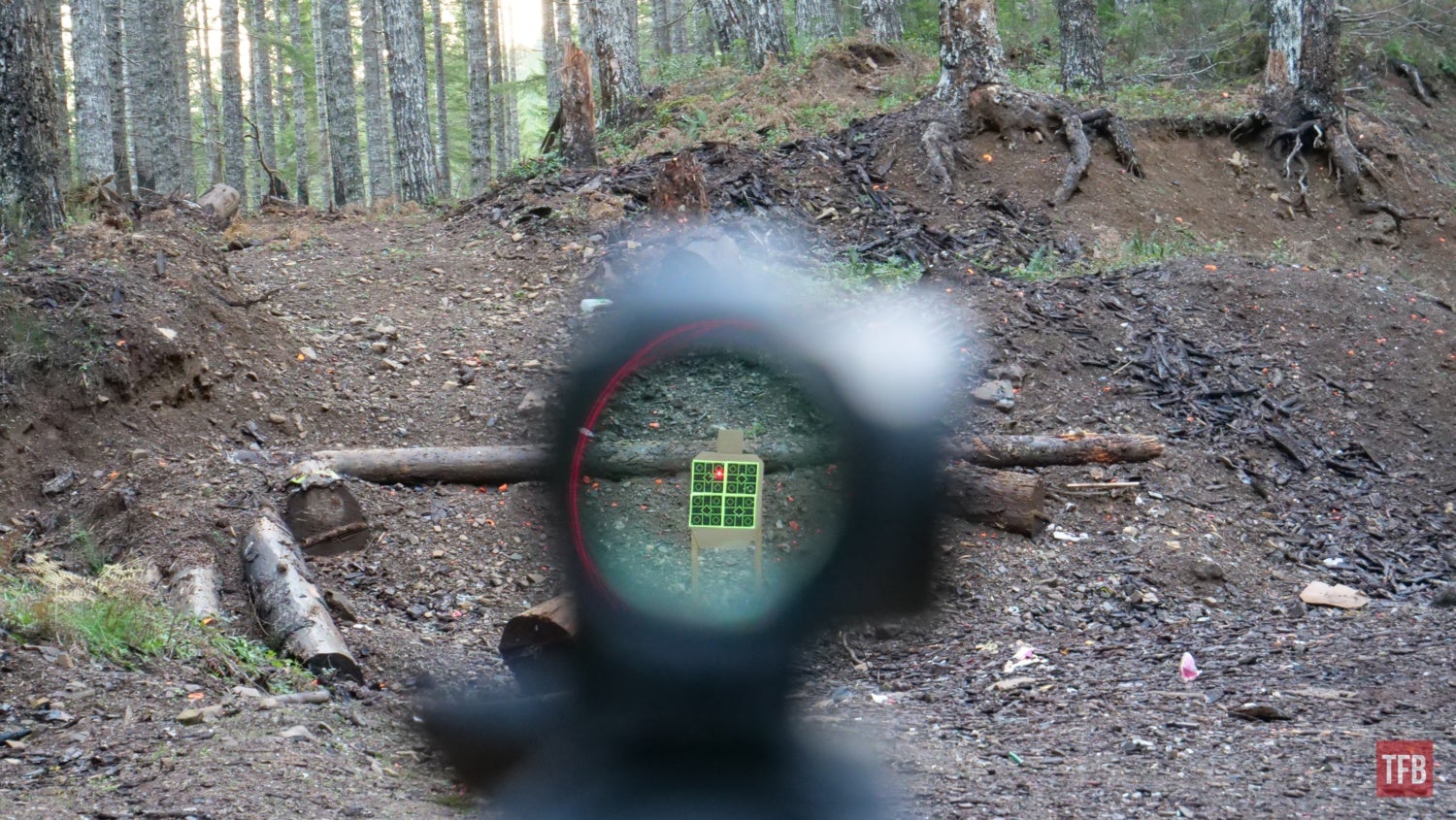
The Aimpoint Duty RDS is designed to be much less expensive (about $300 so), and more convenient to use. Primarily aimed at law enforcement and military personnel, the Duty RDS features exposed, tool-adjusted windage and elevation adjustments that are still water and dustproof, as well as exposed yet small dot intensity buttons. The Duty RDS lacks the two additional brightness settings that the T2 has, bringing the total number of brightness adjustments to 6 daylight and 4-night vision.
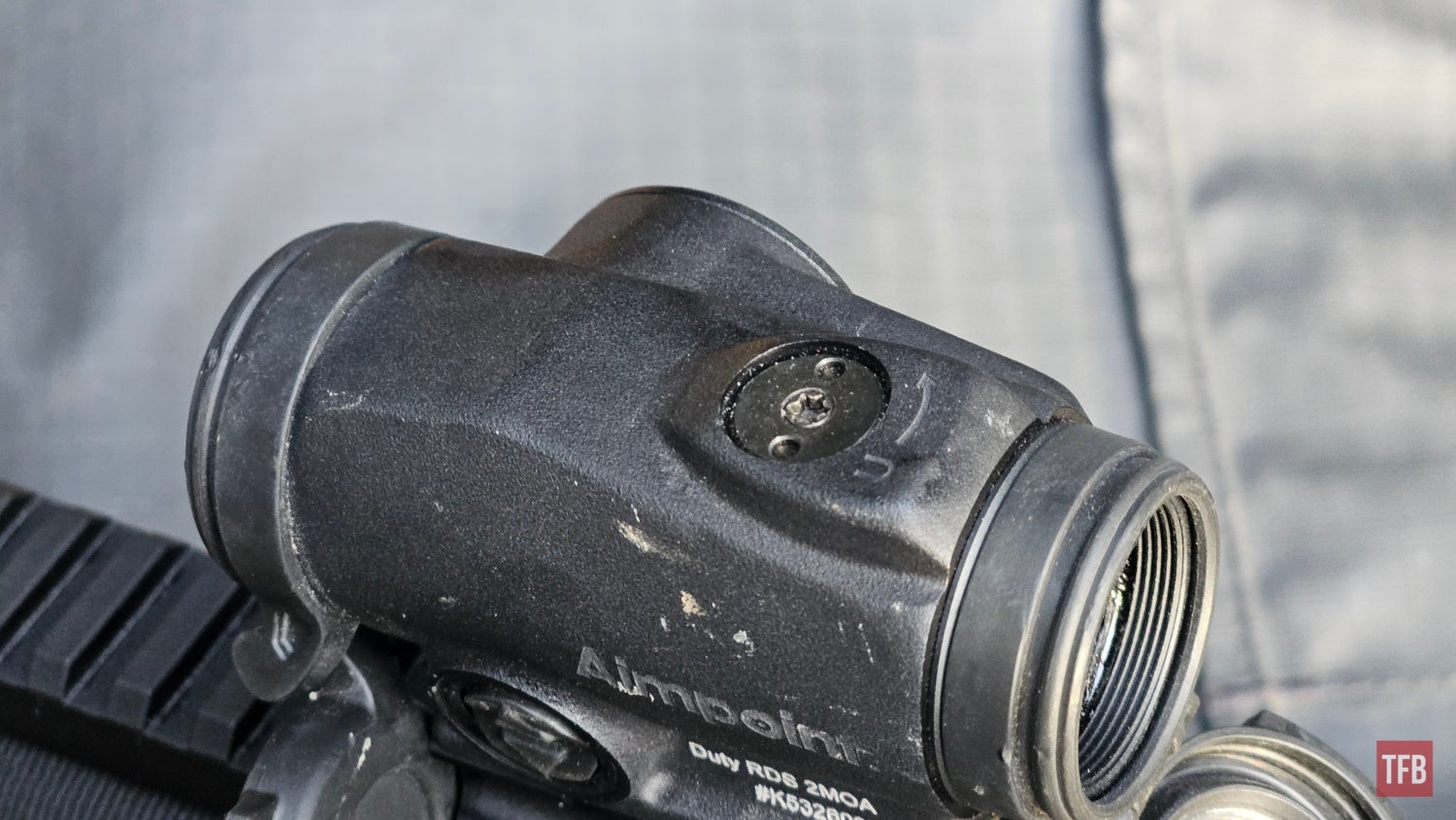
Daytime Use
The Duty RDS performs identically to the T2 in a lot of ways in that it features about the same amount of glass clarity, and doesn’t really have much in the way of features to complicate the process of zeroing the optic. A single push of either of the brightness buttons brings the entire optic on, and from there you can press up or down on the buttons to adjust the brightness, holding the brightness down button for a few seconds powers the optic off. The buttons themselves are nice but kind of hard to use if you have larger fingers, or are wearing gloves of any kind. This system compared to the dial adjustment of the T2 is my least favorite feature of the Duty RDS.
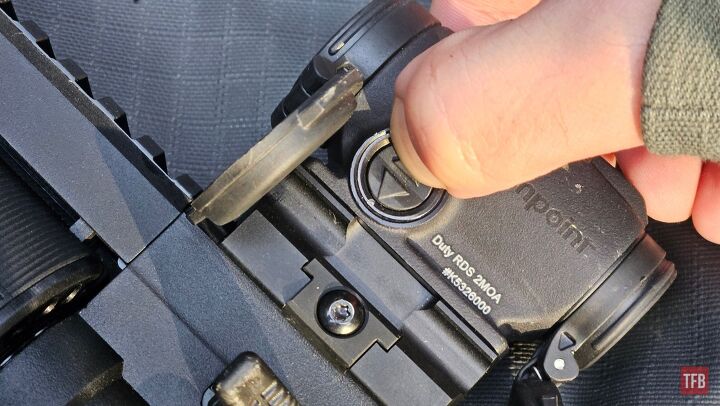
One major value advantage that the Duty RDS has over the T2 is that it comes ready to mount on a rifle right out of the box. The optic comes standard with a Picatinny mount held in place by a torsion mount. Aimpoint includes the proper tool for both mounting the optic and adjusting windage and elevation.
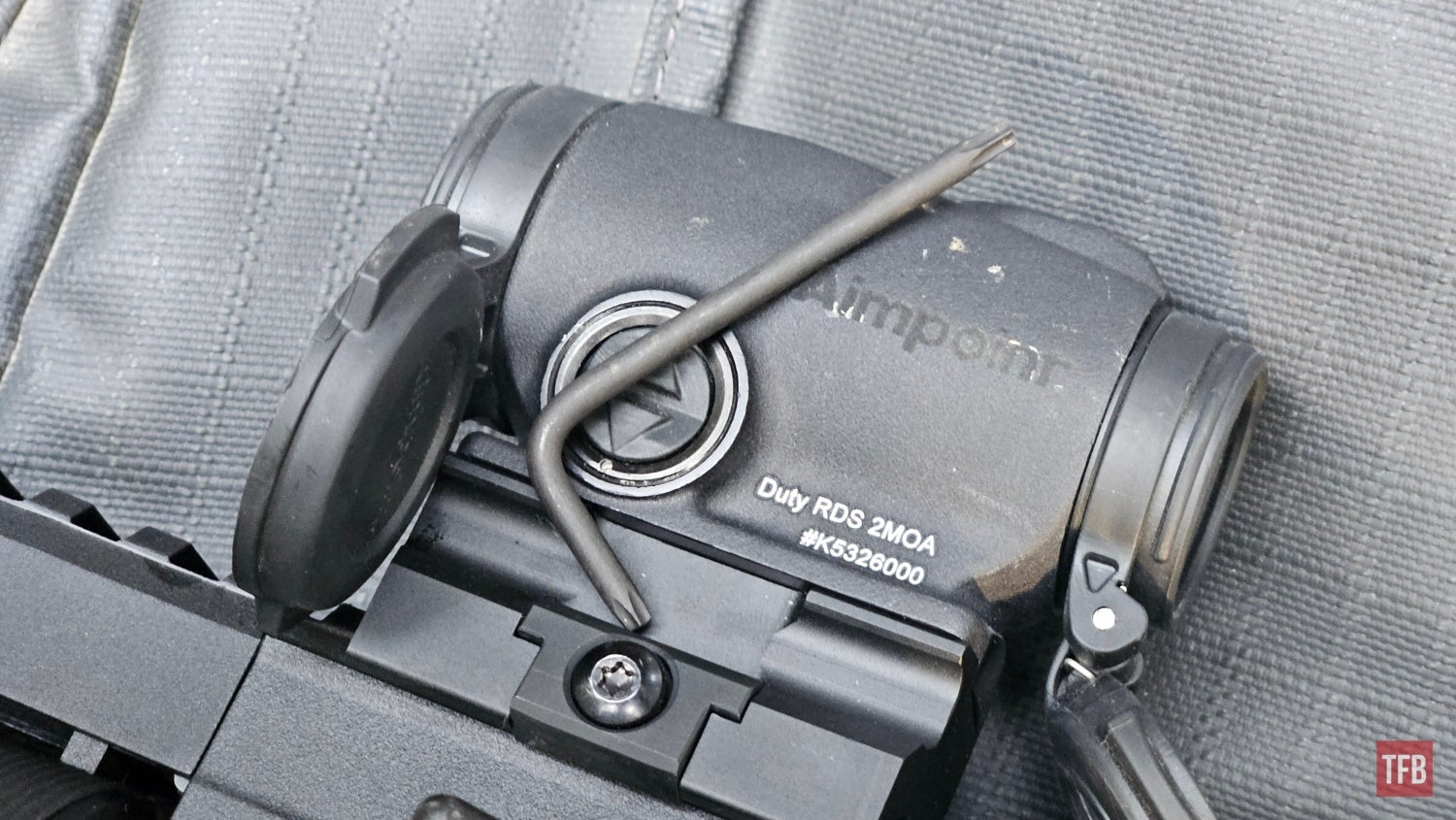
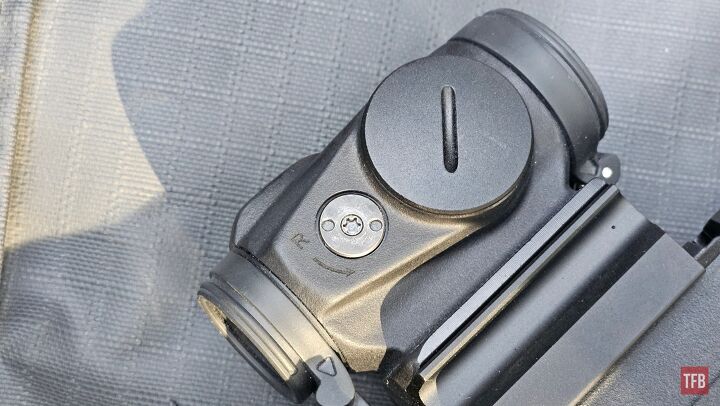
The windage and elevation adjustments are nice loud and tactile and are granular enough to zero in a rifle at 50 or 100 yards. The 1/2 MOA adjustments might leave a bit to be desired for more precision applications but should be more than enough for any patrol rifle or carbine. The Duty RDS also includes pre-installed lens covers with the forward-facing one being opaque and the rear one being clear in the center, this is a cool feature that should be on every red dot that will see use outside of a flat range.
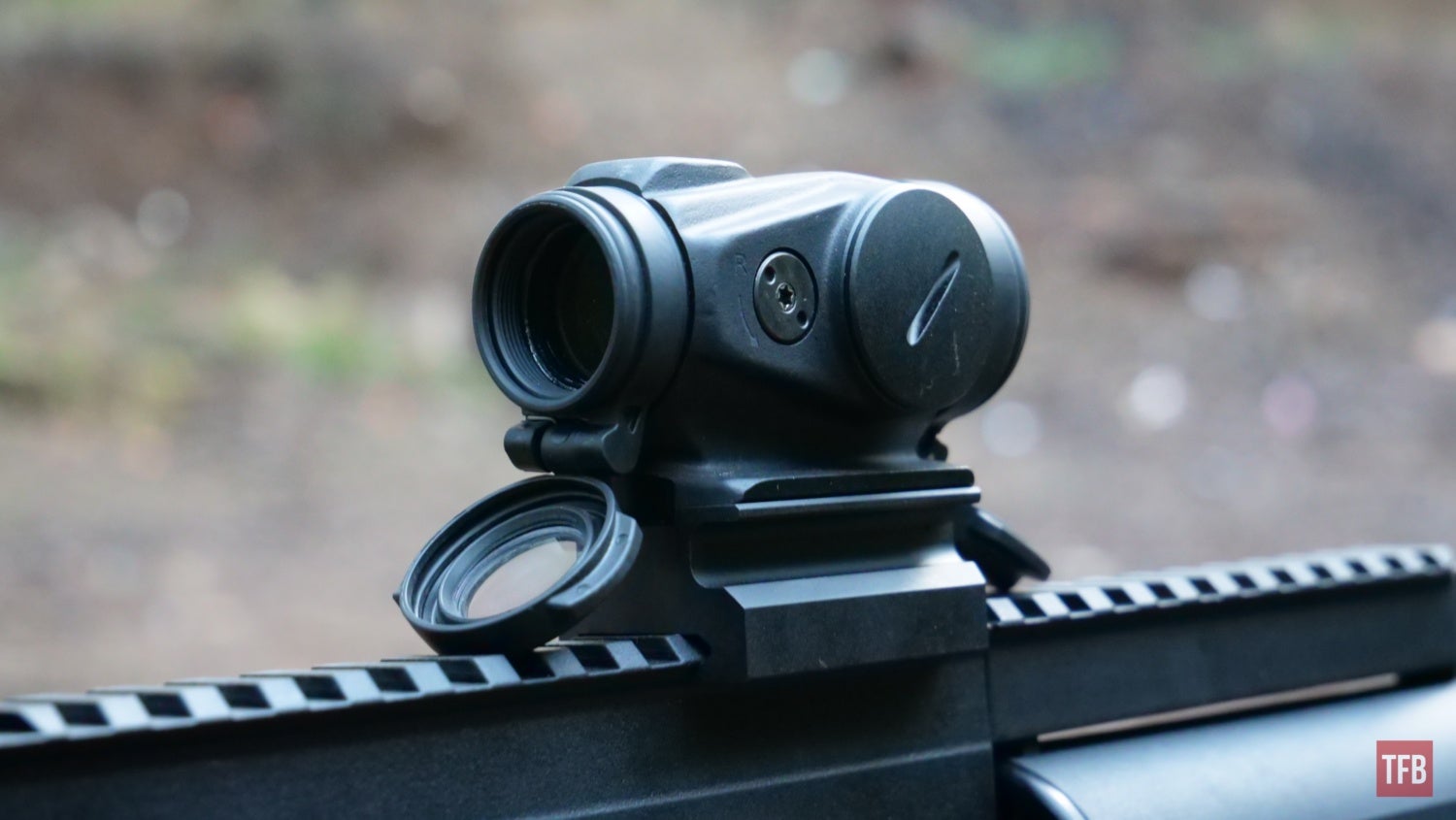
Night Vision Use
While the Aimpoint T2 and a handful of other optics reign supreme in terms of night vision compatibility, the Aimpoint Duty RDS also does a pretty serviceable job of it. With 4-night vision settings, there is enough adjustment in the optic itself to adapt to a wider variety of lighting conditions, but due to the limited light transmission of the glass, it can be difficult to use when passive aiming while using a single tube. Binocular night vision should help make this less of an issue but if you’re purchasing the Duty RDS for its better affordability then I would also assume that dual tubes are something that is also off the table.

The Aimpoint Duty RDS works well when paired with supplemental IR, but lacks the light transmission to truly be useful under extreme low-light conditions.
I did notice that the Duty RDS did have a tendency to easily develop a “halo” around the outer edge of the optic window if the brightness was turned up too much. For me this turned out to not be much of an issue as when there was enough ambient light around, the dot wasn’t generating enough light to create this effect. Combining this with my habit of tending to run my red dots on a slightly dimmer setting meant that this should only be an issue in low-light, high-brightness settings, which includes use under night vision and is a drawback that is also shared with the Aimpoint T2.
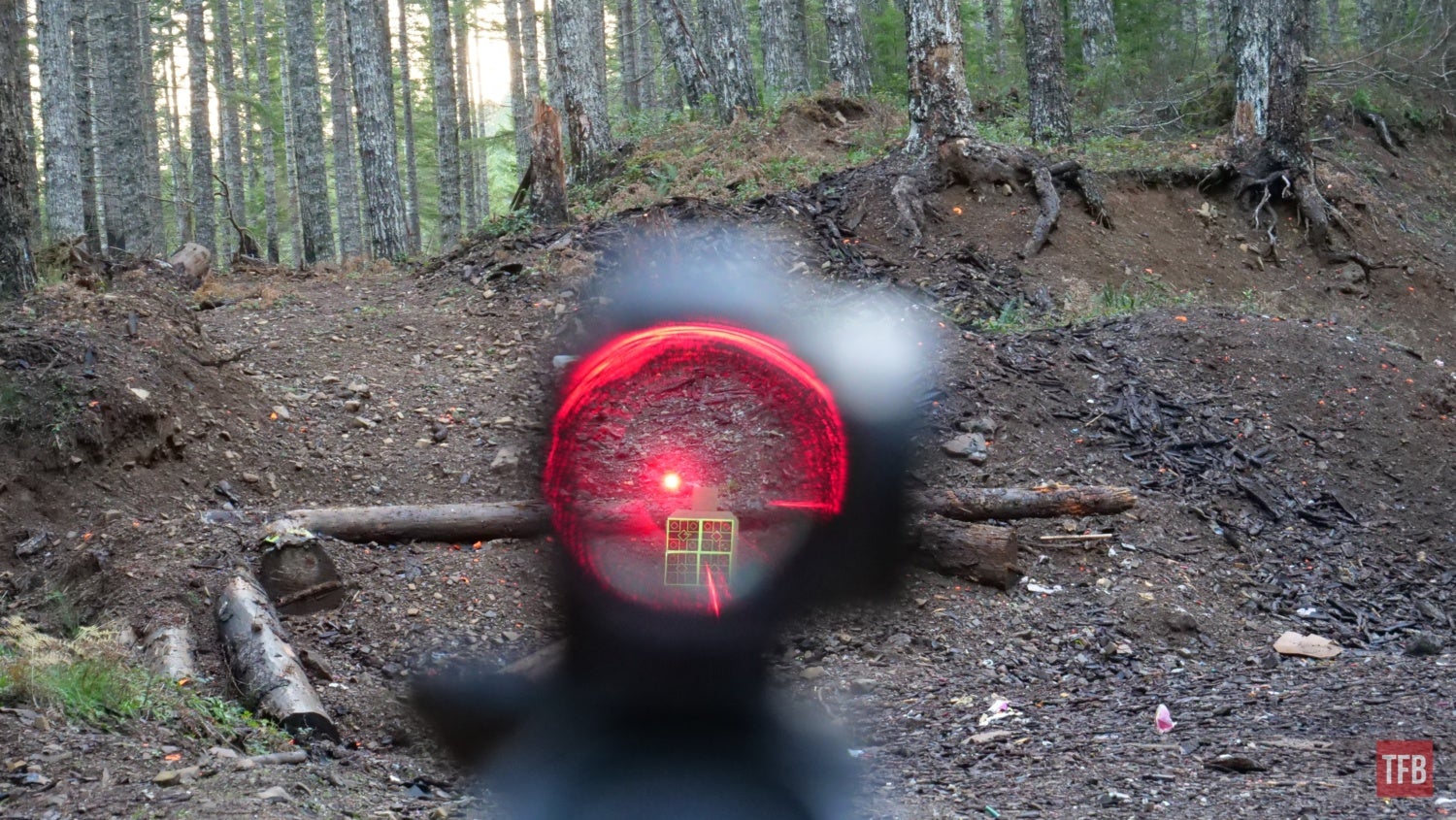
A dot that is too bright will have the side effect of also making the window almost unusable.
Like many who shoot, I have some form of astigmatism (specifically a “starburst effect”). To me, the T1, T2, PRO and Duty actually look identical. The PRO’s and Duty’s glass might have a slightly bluer tint, but it doesn’t really affect practical use during the day but seems to have a pretty massive impact in low-light situations. Clarity-wise, I don’t notice much difference, and parallax isn’t a big deal for me. However, the Duty is bulkier, heavier, and has rougher marks on the housing than the T2 but these differences are probably minimal in the grand scheme of things since both optics are smaller than the Aimpoint PRO.

Now, about whether the T2 is worth the extra cash? That’s a tough one. The Duty, being $300 cheaper, does what I need from an optic. Is it the best in clarity, tint, or night vision? Nope. But is that $300 difference really worth it? Nah, not in my opinion. If money wasn’t an issue, I’d go for the T2. But if that $300 mattered more to me, I’d happily stick with the Duty. It pretty much covers what the T2 does and does it well for a whole lot less.
Surprise! It’s Really a Smaller Aimpoint Pro!
Those among you who are well versed in the red dot optic scene will likely know that the Aimpoint Duty RDS is actually more closely related to the already budget-friendly Aimpoint PRO (Patrol Rifle Optic). While the T2 may be the Duty RDS’s cousin, the PRO is like a sibling to the Duty. Like the Duty RDS, the PRO comes complete with its own mount, middling night vision performance, similar battery life, the same dot intensity settings, and a sub $500 asking price. When you really get down to it, the Aimpoint T2 blows away the Duty RDS and the PRO in terms of night vision performance, and battery life which is what really sets it apart from the two more budget-conscious options – it’s simply more capable and more feature-rich. What the Duty excels at, and who it’s primarily aimed at is where it really excels.
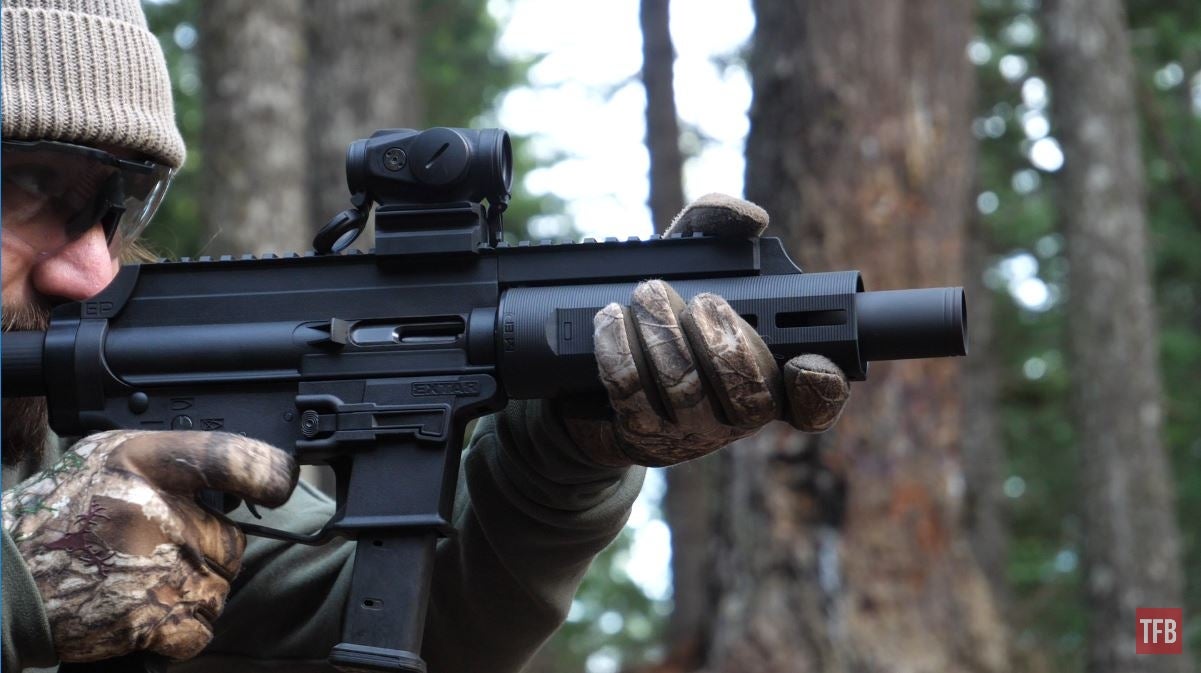
The Aimpoint Duty RDS has it all in the name – it’s meant to be mounted to duty weapons. From a logistics standpoint, having an “all in one” solution that has a simple feature set, durable construction, long battery life, and its own included mount means that a department can more rapidly kit out its patrol carbines, and keep the department’s budget down while still being reasonably assured that their officers will have an optic that is ready to go should the need arise. With that in mind, the Aimpoint Duty RDS is going to cost a fair bit more for its feature set than more commercial-focused red dots.

Long story short, the Aimpoint Duty RDS is really the Aimpoint PRO in an Aimpoint T2 skin suit. Which is kind of cool when you think about it. The Aimpoint PRO is a perfectly serviceable and reliable optic that can tough it out under night vision if you’re after that. If not what it offers you is all the capability and affordability of the Aimpoint PRO, but in a much smaller and in my opinion, better-looking package. This Aimpoint Duty RDS would be perfect for a modern carbine build, and could even get you through your first couple of night vision shoots if you’re not ready to go through the cost of building a dedicated night vision gun.
We are committed to finding, researching, and recommending the best products. We earn commissions from purchases you make using the retail links in our product reviews. Learn more about how this works.
 Your Privacy Choices
Your Privacy Choices
